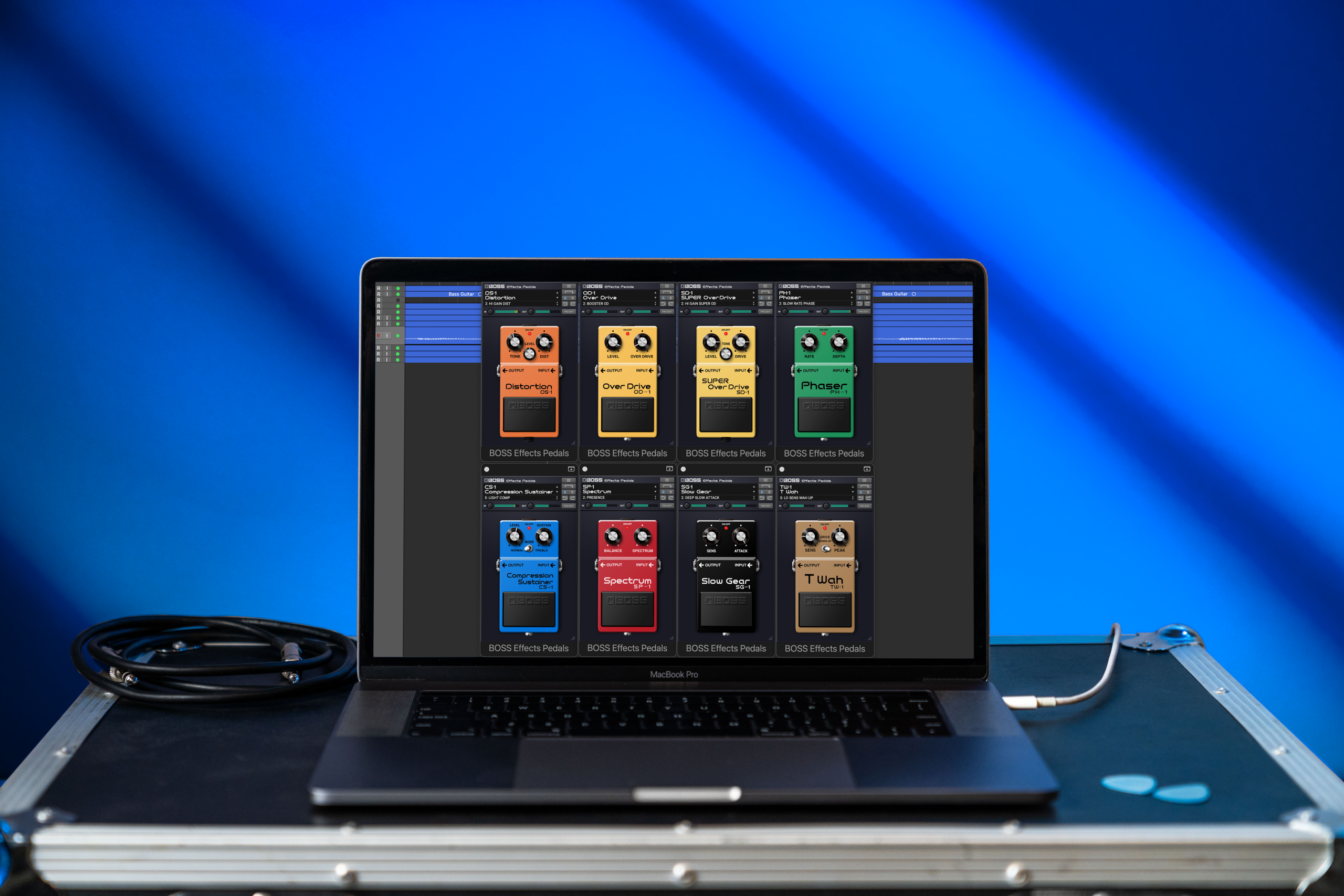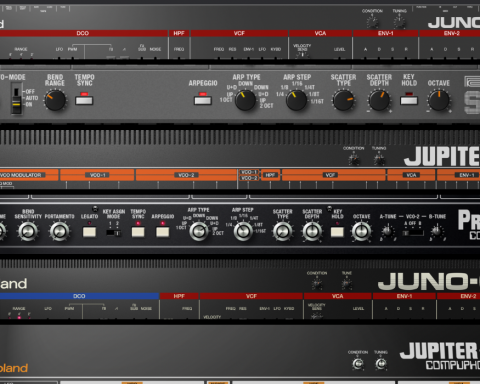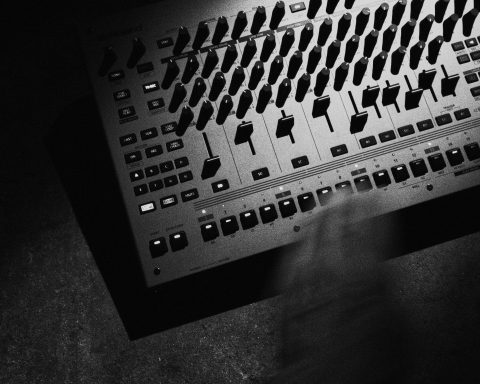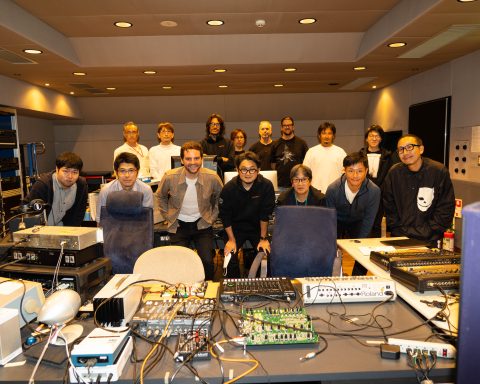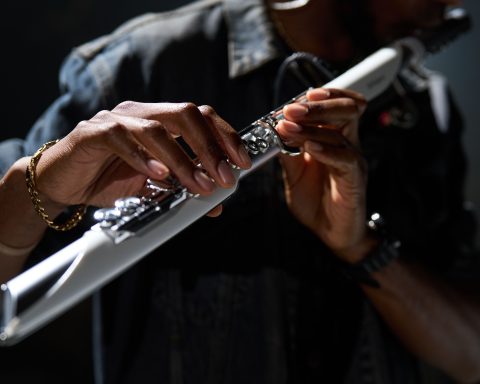Guitarists get to have all the fun. Unless you’re down with the six-string, you may not realize how many amazing and unusual effects pedals there are. From modulation effects to dynamics processing and all points in between, if you can imagine it, it probably exists in pedal form. One of the originators of guitar pedals is BOSS. Since debuting in 1977, the BOSS lineup of compact and colorful stomp boxes has graced many a guitar player’s pedalboard. Now, many of these effects are available to use in your DAW as part of Roland Cloud BOSS Effects Pedals.
Step On It
Within the single plug-in, there is a selection of eight famous BOSS pedals, all recreated just as you’ve seen on stage. You may already know some of them, like the legendary yellow OD-1 Overdrive. Others are a little more esoteric yet no less useful. This guide will give you some ideas on how to best utilize the pedals with synthesizers in your productions. Of course, this is just the beginning. Half the fun of the BOSS Effects Pedals plug-in is experimenting and seeing what emerges. Ready to put the pedal to the metal?
Table of Contents
Give Us a Wink: Distorted Acid
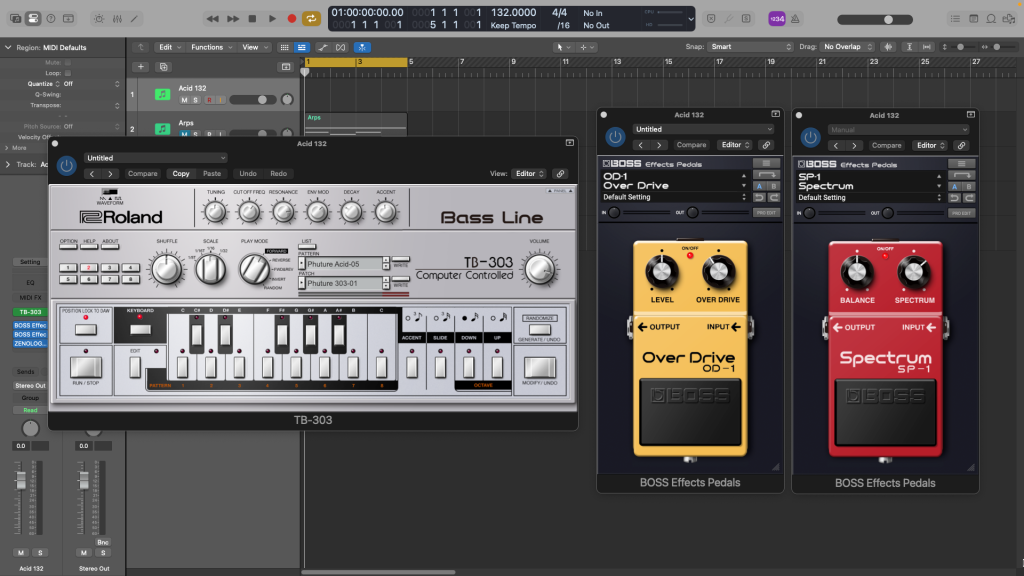
There are few sounds in electronic music more iconic than the Roland TB-303 acid bassline. Pioneered by Chicago artists in the 1980s, the sound took on a new life in the next decade when techno producers like Hardfloor and Josh Wink ran the little silver box through distortion pedals, giving it a new life—and a rough edge. You can recreate that sound with the pedals in Roland Cloud BOSS Effects Pedals.
Start with a suitably funky TB-303 bassline. To bring out the grit and give the pedals something to work with, go for a midrange acid line rather than one that’s too bass-heavy.
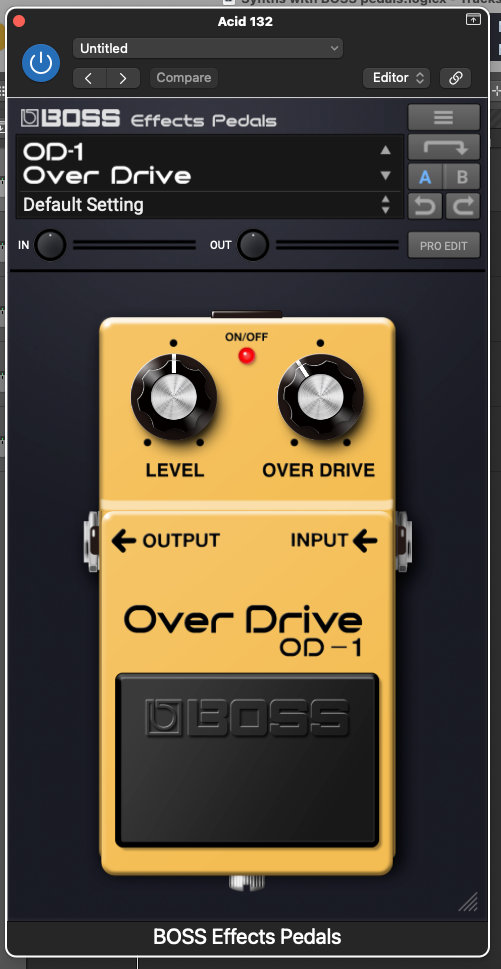
Roland Cloud BOSS Effects Pedals actually offers three different distortion pedals, but the one that pairs the best with the 303 is the OD-1. Click on the preset menu at the top and look inside the OVERDRIVE/DISTORTION section. Once selected, tweak the Overdrive knob until the sound begins to blister.
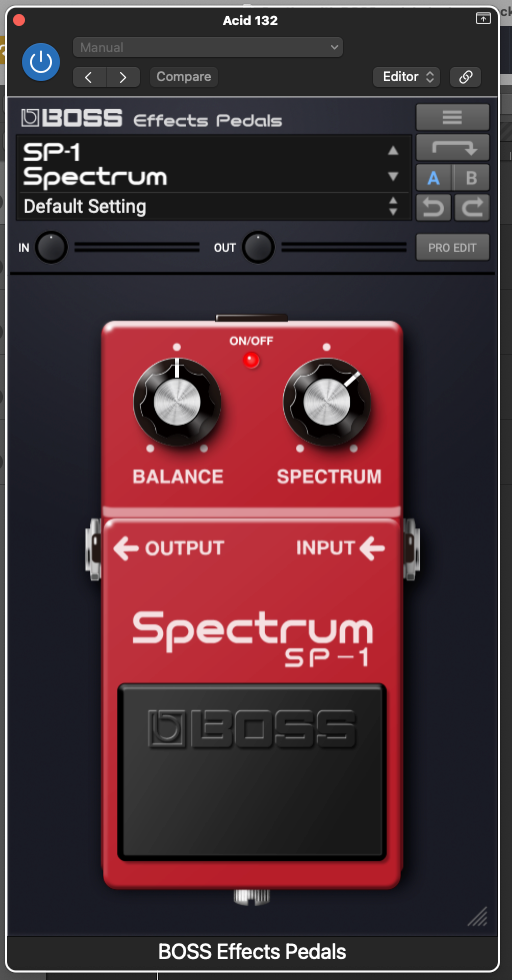
Next, drop in another instance of the plug-in and select SP-1 Spectrum. This unique BOSS effect boosts a single frequency band determined by the Spectrum control. Use that knob to home in on the midrange frequency that accentuates your sound best.
The pedals default to mono mode, which is fine for a bassline. Try adding a stereo delay at the end of the chain, such as one provided by ZENOLOGY FX, to widen things up.
Enter the Stargate: Arps of JUPITER
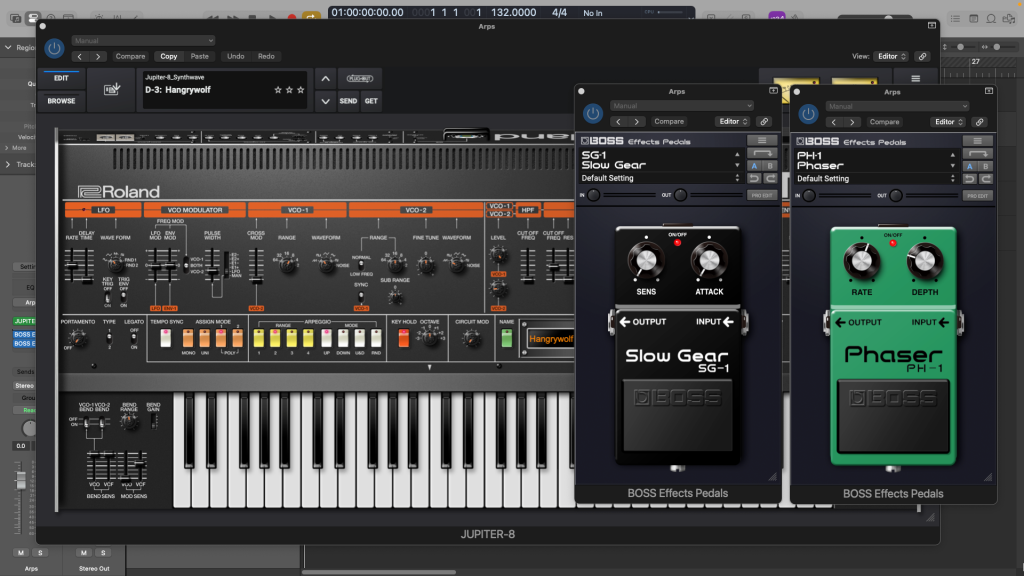
Roland’s JUPITER-8 is a monster synthesizer capable of generating some deliciously plucky arpeggios. However, if you’re looking to change things up a little, try experimenting with BOSS Effects Pedals.
Start by programming an ARP line you like using the JUPITER-8’s onboard arpeggiator. Just for fun, add a short room reverb for extra vibe. Normally, it’s customary to save reverb for the end of a signal chain. However, by applying it to the source, it will also get affected by the BOSS pedals.
After you’ve programmed in an arp that you like, place the BOSS SG-1 Slow Gear pedal next in line. This slows the attack of incoming sounds, replicating the technique of rolling up the volume dial on a guitar. Turn both Sensitivity and Attack all the way down for an intermittent, slow attack effect. Set the effect to Stereo in the Pro Edit section as well to fill out the sound stage.
Next, load up the green PH-1 Phaser for some modulation and movement. Hit the Pro Edit button again, click Tempo Sync to lock the rate to your DAW’s tempo, and select 1/8. Set the depth to around 26 for a subtle effect. You can also try offsetting the initial phase for a more unique experience. Be sure to keep it in stereo.
Miami Spice: Jan Hammer-Style Leads
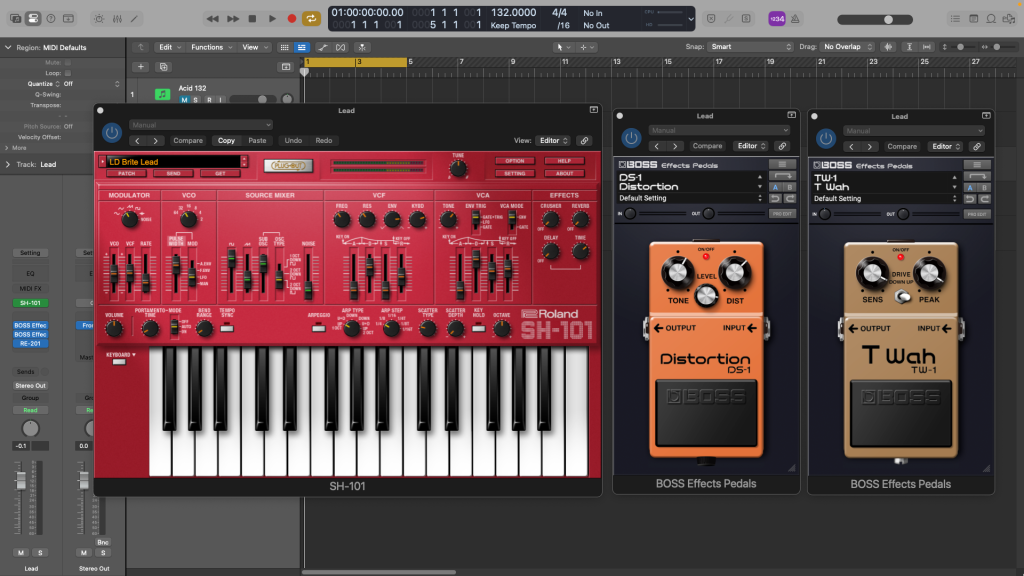
Keyboard genius Jan Hammer is famous for using pedals to make his synth solos sound like guitars. Now, you can turn an SH-101 mono lead line into a tearing six-string sound.
Start by programming in a lead line on the Roland Cloud SH-101. You may need to experiment to find the best filter/resonance combination to work with the pedals.
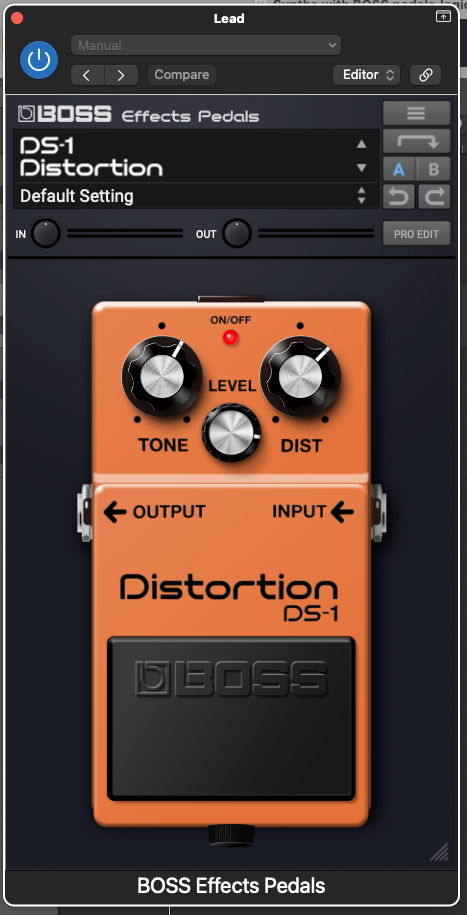
If you’re going for a guitar sound, it has to be the hard-edged attack of the DS-1 Distortion. Adjust the Tone and Distortion knobs until you find the right balance between pain and scream. Don’t be afraid to up the Level knob, too, for extra heat.
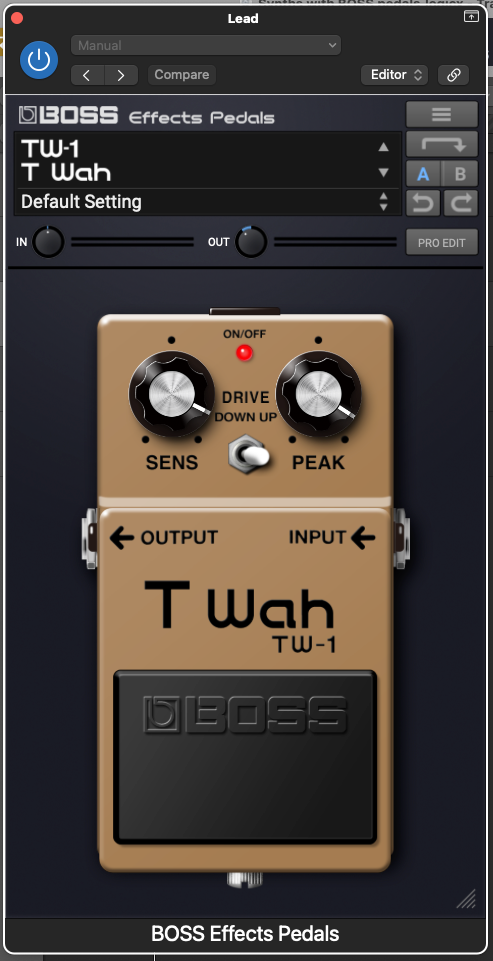
Next, let’s accentuate that tone with the filter from the TW-1 T Wah pedal. Wah pedals are bandpass filters with manual cutoff adjustment. The T Wah, however, forgoes the manual control for Sensitivity and Peak knobs. In this example, you can use it to give the synth lead an even bolder guitar-like flavor. Turn up both Sensitivity and Peak to make the bandpass bite. Set the Drive switch to Up for additional guitar-like power. If your signal is too loud, use the Out dial at the top to reduce the output.
As the signal has stayed mono throughout, try finishing up the signal chain with a stereo delay, such as from the ZENOLOGY FX multi-effect plug-in.

